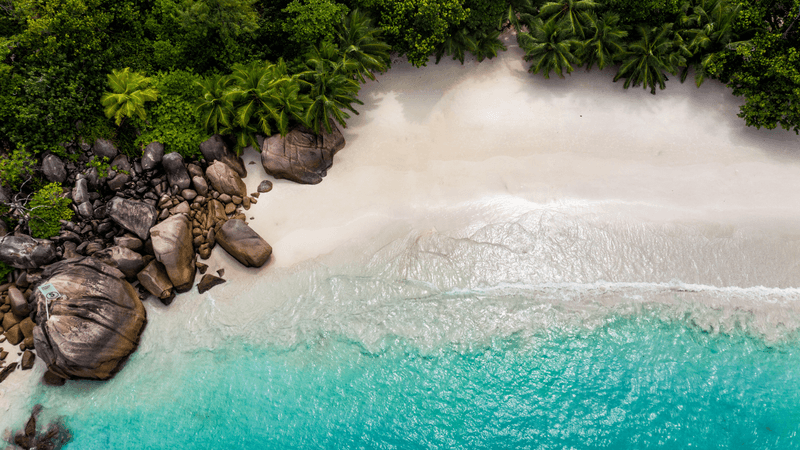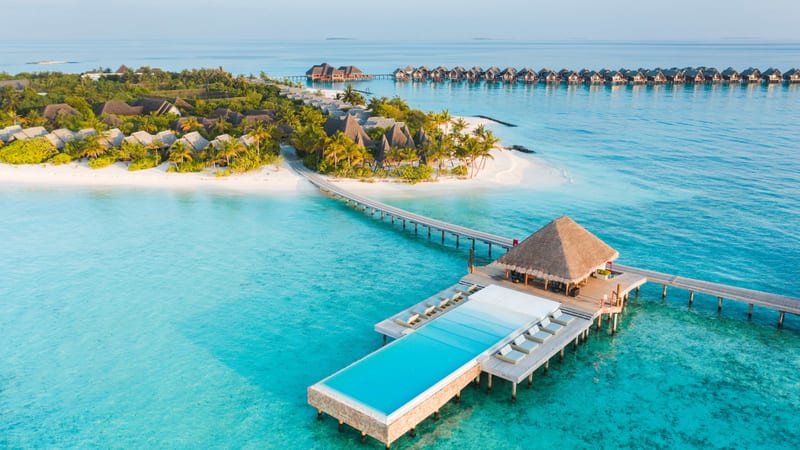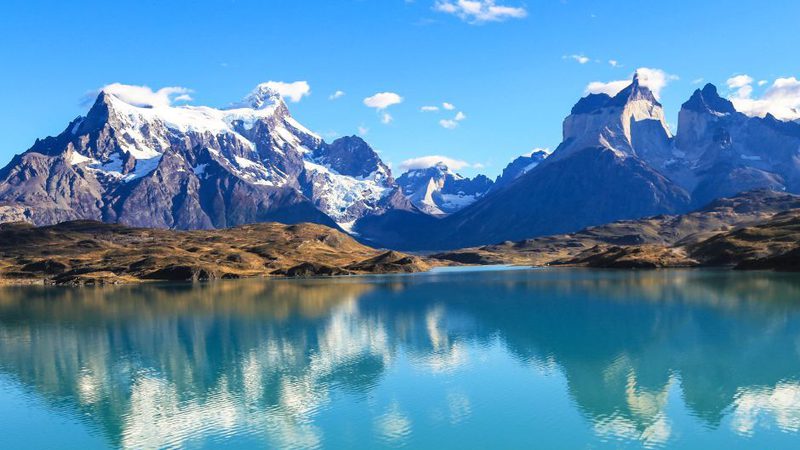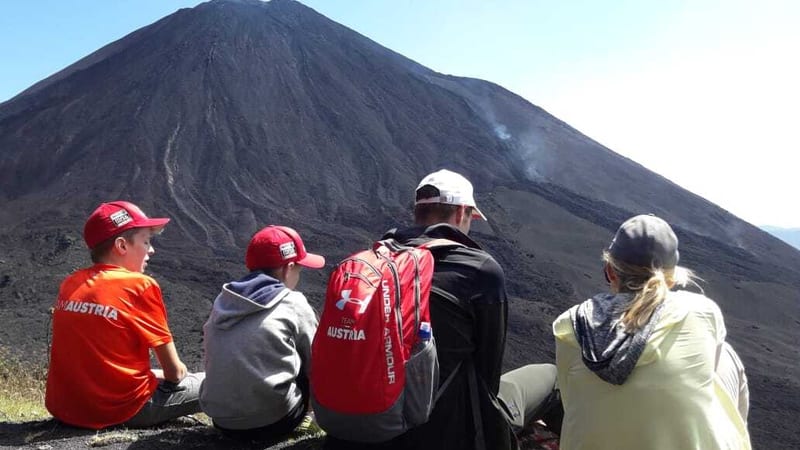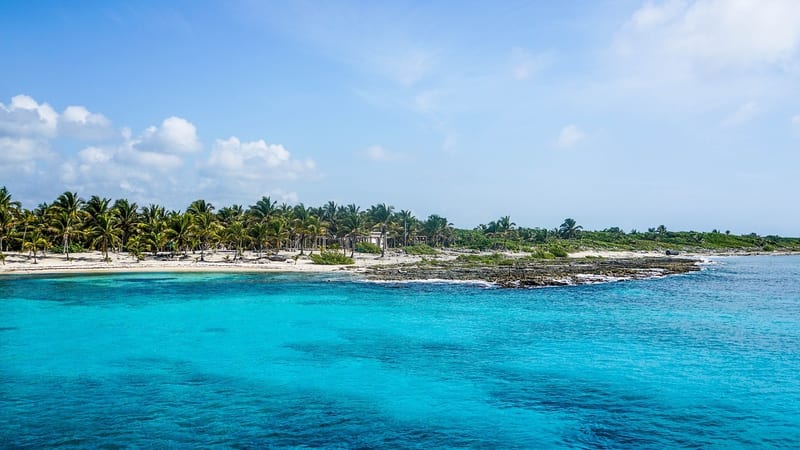A captivating and sustainable haven for those seeking a luxurious escape in a pristine natural environment.
Location
On the peaceful island of Yao Noi in Thailand's Phang Nga Bay, Six Senses Yao Noi feels worlds away from the everyday. With the iconic limestone karsts rising dramatically from turquoise waters, the setting is nothing short of cinematic. It’s the kind of place where time slows down and nature takes centre stage.
Rooms
Six Senses Yao Noi is all about barefoot luxury, and its villas embody that beautifully. Perched on the hillside or nestled among the trees, each one is a private sanctuary with its own infinity pool and sun deck. Traditional Thai architecture blends with open, airy interiors and natural materials, creating spaces that feel both grounded and indulgent. We love that every villa opens up to uninterrupted sea views or lush jungle surrounds.
Amenities
The resort makes it easy to do as much or as little as you like. Guests can unwind at the open-air cinema, cool off in the main pool, or relax in the jungle-fringed spa. There’s also a fitness centre, library, and personal butler service. Dining is a highlight here too – from fresh wood-fired pizzas to elegant dinners overlooking the bay.
Activities
Whether you’re exploring nearby islands by boat, snorkelling in hidden coves, or learning to cook Thai classics with the in-house chef, experiences here are immersive and thoughtful. There’s a strong focus on wellness too, with yoga classes, holistic therapies, and spa treatments inspired by local traditions.
Sustainability
Sustainability is at the heart of everything at Six Senses Yao Noi. The resort’s organic garden supplies ingredients for its restaurants, and there’s a strong farm-to-table ethos. Waste is carefully managed through composting and recycling, with an aim to be zero-waste. Single-use plastics are avoided, and energy-efficient practices are in place across the property. It’s luxury with a light footprint – and that’s something we really admire.
Best places to stay in Khao Lak
Khao Lak Trip Inspiration
When to visit Thailand
Find out the best time to visit Thailand with our month by month guide.
- Best
- Good
- Mixed
- Jan
- Feb
- Mar
- Apr
- May
- Jun
- Jul
- Aug
- Sep
- Oct
- Nov
- Dec
January
January is one of the best months to visit Thailand, with dry, sunny days and cooler temperatures across most of the country. It's an ideal time for beach holidays in Phuket, Krabi, and Koh Lanta, where the sea is calm and crystal clear. In the north, Chiang Mai and Chiang Rai offer crisp mornings and pleasant days, perfect for exploring temples and mountain landscapes. It’s also peak tourist season, so book in advance for popular spots.
February
February continues the dry season with reliably sunny weather and temperatures starting to climb. Beach conditions are still fantastic, especially on the Andaman coast. It’s also a great month for visiting Bangkok and central Thailand, where humidity remains relatively low. Festivals like Chiang Mai’s Flower Festival add extra colour to the month, and hiking in the north is still very comfortable.
March
March marks the start of the hot season, with rising temperatures across the country. It’s a good time for beachgoers who don’t mind the heat, particularly in places like Koh Phi Phi and Koh Lipe. Inland cities like Bangkok and Ayutthaya can feel sweltering in the afternoons, so plan sightseeing for early mornings. The north becomes drier and dustier, especially with the onset of the agricultural burning season.
April
April is the hottest month in Thailand, but it’s also one of the most fun thanks to Songkran, the Thai New Year. Celebrated with country-wide water fights, it's a joyful (and cooling) experience. While temperatures can reach well into the 30s°C, beach destinations on either coast offer some respite. Make sure to stay hydrated and take things slow, especially in cities.
May
May marks the beginning of the rainy season in most regions, although downpours tend to be short and sharp rather than constant. The humidity ramps up, particularly in central and northern Thailand. It’s a quieter time to travel, with fewer crowds and lush, green landscapes emerging. The Gulf islands—like Koh Samui, Koh Tao, and Koh Phangan—tend to see better weather than the Andaman coast.
June
June sees more regular rainfall, but it rarely disrupts travel plans too much. The countryside is vibrant, and waterfalls are at their best. While western beaches like Phuket may see more rain, the Gulf coast remains relatively dry, making it a great time for snorkelling and diving around Koh Tao. Expect lower prices and a more relaxed vibe almost everywhere.
July
July brings heavier rains to the north and Andaman coast, but travel is still very possible with a bit of flexibility. Rice paddies turn brilliant green, and misty mountains in the north offer atmospheric views. On the Gulf coast, beach days are still common. Cultural travellers may enjoy this quieter period for exploring temples, museums, and food tours.
August
August is in the heart of the monsoon season, but showers are usually short-lived and followed by sunshine. It’s a great time for nature lovers, as the landscape is lush and full of life. Inland travel can be trickier with occasional flooding, so coastal stays in Koh Samui or Koh Phangan are often the better bet. Festivals and markets continue to run, albeit with fewer tourists around.
September
September is typically the wettest month of the year, particularly in the north and on the Andaman coast. While it’s not the best time for sunbathing, it’s a brilliant opportunity to enjoy Thailand’s cultural side at a slower pace. Think cooking classes, spa days, and temple tours. Prices are at their lowest, and you'll often have attractions almost to yourself.
October
October marks the transition from rainy season to dry season, particularly towards the end of the month. While early October can still be wet, especially in the north, the skies begin to clear by mid-month. It’s a great time to visit Bangkok and central Thailand before the high season crowds arrive. Northern provinces like Chiang Mai begin their cooler season, making trekking and outdoor adventures more comfortable.
November
November is when Thailand really shines. The weather turns reliably dry and sunny across most of the country, especially the Andaman coast. Popular islands like Phuket, Krabi, and Koh Lanta come back to life. In the north, the cooler temperatures are ideal for hiking and exploring rural landscapes. Festivals like Loy Krathong add a magical touch with lantern-lit celebrations in Chiang Mai and Sukhothai.
December
December is peak travel season, thanks to the beautiful weather, festive atmosphere, and Christmas holidays. Beach resorts on both coasts are bustling, so early booking is essential. It’s also a great time to explore Bangkok’s markets and rooftop bars, or take to the hills of northern Thailand for trekking and nature. With low humidity and bright skies, it’s one of the best times to experience the country in full swing.
Speak to a Thailand expert today
and start planning your tailor-made holiday

Nia
Thailand Expert







